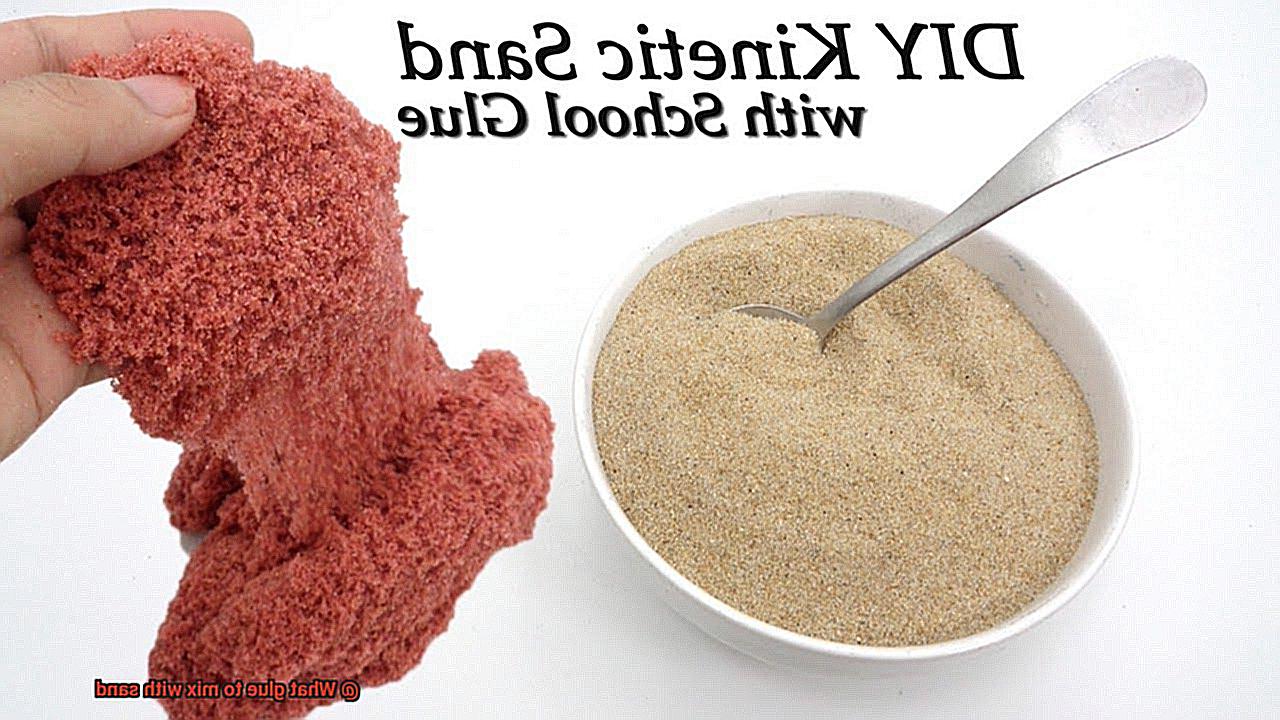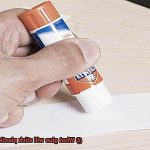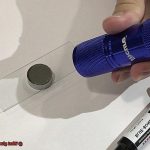Looking for a glue that’s as tough as nails and can handle the gritty goodness of sand? Look no further. In this blog post, we’re diving deep into the world of glue and sand combos. Whether you’re a DIY fanatic, a craft connoisseur, or a construction pro, knowing the right glue to mix with sand will take your projects to new heights of durability and creativity.
There are all sorts of glues out there, each with its own special powers. One popular choice for mixing with sand is good ol’ polyvinyl acetate (PVA) glue, also known as white glue. This water-based adhesive dries quick, bonds strong with those sandy particles, and it’s non-toxic too. Perfect for crafts, sculptures, and even fixing up small stuff.
But if you’re tackling heavy-duty projects like table tops or flooring, epoxy adhesive is your go-to. This bad boy brings the muscle when it comes to strength and durability. Mix it up with some sand, and you’ve got yourself a winning combo that’ll hold up against anything life throws at it.
Now here’s the secret sauce: getting that perfect consistency when mixing glue and sand. Start by adding small amounts of glue to your sandy mix and gradually stir until you’ve got a thick paste-like texture going on. Be careful not to go overboard with the glue though – too much can weaken the bond or make drying time drag on forever.
When you bring together glue and sand, magic happens. You can whip up mind-blowing sand art pieces, create textured surfaces that’ll make jaws drop, or add some serious stability to your woodworking masterpieces. So whether you’re an artist looking to push boundaries or just want stuff that won’t fall apart easily, playing around with glue and sand combos is where it’s at.
Stay tuned because we’ve got more in store for you. We’ll be spilling the beans on different types of glues, giving you expert tips on mixing them with sand, and serving up some seriously inspiring project ideas. Get ready to unleash your inner creative beast with glue and sand – the possibilities are endless.
What Is Glue?
Contents
Glue, often overlooked but indispensable, possesses a remarkable power to unite surfaces. In this article, we will venture into the world of glue, uncovering its diverse types, mechanisms, and even the art of mixing it with sand for a range of projects.
Types of Glue:
- PVA Glue: The go-to water-based adhesive for crafts and woodworking. It forms a reliable bond between materials like wood, paper, and fabric.
- Epoxy Glue: Renowned for its strength and durability, epoxy glue consists of two components that chemically react to create an inflexible bond. It excels in resisting heat, water, and chemicals.
- Super Glue: Also known as cyanoacrylate adhesive, super glue swiftly forges a robust bond on materials such as plastic, metal, and ceramics.
- Construction Adhesive: Engineered for heavy-duty projects, construction adhesive fortifies materials like wood, concrete, metal, and stone with a powerful and enduring bond.
Mixing Glue with Sand:
- PVA Glue: Combining equal parts PVA glue and sand yields a versatile mixture suitable for various crafts and DIY projects.
- Epoxy Resin: Following the manufacturer’s instructions to blend epoxy resin with sand ensures optimal adhesion for more permanent projects.
- Cement or Concrete: For construction purposes, specific ratios provided by the manufacturer must be followed when mixing cement or concrete with sand.
Tips for Successful Mixing:
- Conduct preliminary tests on a small scale to determine which glue best suits your project.
- Consider the desired outcome – flexibility or strength – when selecting the type of glue to mix with sand.
- Thoroughly mix the glue and sand to achieve a homogeneous concoction for proper adhesion.
Conclusion:
Glue possesses an incredible adhesive capability that empowers us to transform our creative visions into tangible realities. With its diverse types and the ability to blend with sand, glue unlocks limitless possibilities in crafts, woodworking, and construction. So, venture forth and embrace the enchantment of glue as it magically binds ordinary materials into extraordinary creations.
Different Types of Glue
Mixing glue with sand can be the key to unlocking endless possibilities for your projects. In this blog post, we’ll delve into the various types of glue that can be mixed with sand and delve into the factors to consider when selecting the perfect glue for your endeavor. Brace yourself for an adventure of artistic expression and let’s create something extraordinary.
PVA Glue: The Versatile Wonder
PVA glue, also known as white craft glue, is a popular choice for sand mixing. Its water-based composition makes it user-friendly, and its transparent drying quality allows the sand’s natural beauty to shine through. PVA glue is ideal for arts and crafts projects as it provides a versatile and robust bond. Whether you’re constructing sandcastles or crafting unique sand art, PVA glue is your trusty companion that holds everything together seamlessly.
Epoxy Resin: The Super Strength Solution
When durability and strength are paramount, epoxy resin is your go-to adhesive for sand mixing. This two-part wonder creates an unyielding bond that stands the test of time. Widely used in industrial applications, epoxy resin is perfect for projects requiring a permanent hold, such as outdoor sculptures or decorative objects.
Construction Adhesive: Building with Confidence
If you’re embarking on a construction project or creating something that demands endurance, construction adhesive is the glue for you. This formidable adhesive is designed to bond various materials, including sand, making it ideal for building structures or repairing broken items. With construction adhesive, you can build with unwavering confidence and ensure a long-lasting bond.
Silicone Adhesive: Weatherproof Wonder
For projects exposed to moisture or outdoor elements, silicone adhesive is your ultimate companion. This flexible and waterproof adhesive will keep your sand creations intact, regardless of the weather conditions. Whether you’re crafting a garden ornament or a mosaic masterpiece, silicone adhesive guarantees that your project will withstand the test of time.
Cement: The Solid Foundation
For those seeking a more traditional approach, cement can be mixed with sand to create a robust and sturdy bond. Often used in construction projects, cement provides excellent adhesion. Just remember to follow the manufacturer’s instructions for mixing ratios to achieve the desired consistency and strength.
Mixing Glue with Sand: White School Glue
In this blog post, we will embark on a journey to discover how white school glue can be used to create awe-inspiring art projects. So don your apron and let your imagination take flight.
Unleashing the Power of White School Glue:
White school glue is a versatile adhesive beloved by students and teachers alike. Its water-based formula allows it to seamlessly blend with sand, resulting in a sturdy structure that holds everything together. With its robust bonding properties, this glue is perfect for an array of crafting activities, sand art endeavors, and even concocting homemade playdough.
The Perfect Ratio:
To achieve the desired consistency and texture, begin by adding a small amount of glue to the sand and gradually adjust as needed. Experimentation is key as you play with different ratios, allowing your artistic vision to come to life.
Cleanliness is Paramount:
Before delving into the mixing process, ensure that both the glue and sand are pristine, free from any impurities that may hinder their union. This meticulous attention to detail ensures a solid bond between particles, giving your project the best chance to shine.
Patience is a Virtuous Virtue:
Once you’ve masterfully blended the glue and sand together, exercise patience and grant ample drying time for the creation to set and harden. The drying duration can vary depending on environmental factors and the thickness of your mixture. So sit back, relax, and watch your masterpiece blossom before your eyes.
Durability Matters:
While white school glue provides a formidable bond between sand particles, it may not fare well in outdoor settings or areas exposed to moisture. In such cases, consider exploring alternative adhesives or sealants to ensure the longevity of your creation.

Mixing Glue with Sand: Epoxy Resin
Mixing glue with sand has the potential to unlock a world of creativity, allowing you to create unique crafts, sculptures, or even make repairs. And when it comes to finding the perfect adhesive for this purpose, look no further than epoxy resin. Epoxy resin is a versatile and powerful adhesive that can bond seamlessly with various materials, including sand. In this section, we will guide you through the step-by-step process of mixing epoxy resin with sand to create a bond that is not only strong but also durable.
Before you embark on your epoxy resin-sand mixing adventure, it’s crucial to gather all the necessary materials. You will need epoxy resin, a hardener, clean and dry sand, a reliable mixing container, a mixing stick or paddle mixer, and any tools or surfaces you plan to apply the mixture to.
Now let’s delve into the exciting process of combining glue and sand to create epoxy resin:
- Prepare the sand: To ensure optimal results, begin by thoroughly cleaning the sand and removing any debris or moisture. Give it a good wash and allow it to completely dry before proceeding.
- Measure the epoxy resin and hardener: It’s essential to follow the manufacturer’s instructions carefully to determine the precise ratio of resin to hardener. This ratio is critical for achieving a strong and lasting bond.
- Mix the epoxy resin and hardener: In your trusty mixing container, combine the resin and hardener in the correct proportions. To ensure a homogeneous mixture, use a mixing stick or paddle mixer and stir thoroughly until the components are fully combined.
- Gradually add the sand: As you stir continuously, gradually introduce the prepared sand into the epoxy resin mixture. Ensure that each grain of sand is uniformly coated with the adhesive, creating a seamless connection.
- Adjust the consistency: The mixture should resemble wet sand in terms of consistency, making it easy to spread and mold as desired. If the mixture appears too dry, you can adjust the consistency by adding more epoxy resin or a small amount of hardener.
- Apply the mixture: Depending on your project, you can evenly spread the epoxy resin-sand mixture over a surface or use it as a versatile filler for cracks and gaps. Use tools or your hands to shape and mold the mixture to bring your artistic vision to life.
- Allow for curing: To ensure optimal bonding, it is crucial to follow the manufacturer’s instructions regarding the recommended curing time. Factors such as temperature and humidity can influence this duration. Therefore, it is essential to be patient and provide adequate time for the mixture to fully harden and bond with the surface.
- Finishing touches: Once the epoxy resin-sand mixture has completed its curing process, you can take it to the next level by sanding, painting, or sealing it to achieve your desired finish and enhance its visual appeal.
Mixing Glue with Sand: Cement or Concrete
When it comes to mixing glue with sand, there are two contenders vying for the crown: cement and concrete. These materials may seem similar, but they possess distinct qualities that make them ideal for different applications. In this article, we delve into the differences between cement and concrete when combined with glue and sand, providing you with an in-depth understanding of their unique attributes.
Cement:
- Cement is a binding agent crafted from a blend of limestone, clay, shells, and silica sand.
- When water is added, cement transforms into a paste-like substance that hardens over time.
- It finds its niche in smaller projects or situations that demand a stronger bond.
- Perfect for tasks such as repairing cracks in walls or molding intricate sculptures.
- Its quick-drying nature makes it a go-to choice for projects requiring swift results.
Concrete:
- Concrete, on the other hand, is a concoction of cement, sand, gravel, and water.
- Renowned for its strength and durability, concrete reigns supreme in the realm of construction.
- By incorporating sand into concrete, you enhance its stability and bolster its structural integrity.
- Ideal for grand undertakings like building foundations, sidewalks, or sprawling driveways.
- Concrete takes its time to fully cure and realize its maximum strength compared to cement.
Factors to Consider:
- Proportions: Achieving the perfect balance between glue and sand is crucial to attaining optimal strength and bonding properties. Too much or too little glue can compromise the quality of your mixture.
- Drying Time: Cement dries at a faster pace than concrete. Hence, take project timelines into account when choosing between these two options.
- Cost: Cement generally proves more cost-effective than concrete as it requires fewer additional components like gravel. However, the overall expense depends on the quantity needed.
Choosing the Right Type:
Within the realm of cement, different types exist, such as Portland cement and masonry cement. Each possesses unique properties suitable for specific applications. Seek advice from professionals or conduct comprehensive research to identify the ideal type for your project.
Factors to Consider When Choosing a Glue
The right glue can make or break your project, so it’s important to consider various factors before making your choice. Don’t worry – we’re here to guide you through the decision-making process.
Adhesive Properties:
First and foremost, you need a glue with excellent adhesive properties. Look for glues specifically designed to bond different materials, including sand. These specially formulated glues ensure a strong and durable bond, keeping your sand mixture intact.
Drying Time:
Time is of the essence. If you’re working on a project that requires immediate results, opt for a fast-drying glue. It sets quickly, allowing you to move forward without delays. On the other hand, if you have time to spare, slower-drying glues offer flexibility for adjustments and repositioning before fully setting.
Flexibility:
Sand can be finicky, prone to cracks and breakages. Choose a glue that provides flexibility after drying to ensure the longevity of your project. This flexibility allows the sand mixture to withstand slight movements without compromising its structure.
Water Resistance:
For projects exposed to moisture or water, like outdoor applications or bathroom tiles, water resistance is essential. Look for waterproof glues to keep your glue-sand mixture intact even in damp conditions.
Safety Considerations:
Safety first. Opt for non-toxic glues that are safe for use in various environments, especially if children or animals are involved. Consider hypoallergenic options for those with allergies.
Application Method:
Consider the application method that suits your project best. Some glues come in tubes or bottles with nozzles for precise application, while others require brushes or spatulas for even spreading. Choose a convenient and easy-to-use glue for your specific needs.
Longevity:
Think about how long you want your project to last. For durability, choose a glue that offers long-lasting results. Some glues may deteriorate over time, weakening the bond between sand particles. Select a glue that can withstand the test of time based on the materials you’re working with.
How to Achieve the Desired Outcome When Mixing Glue and Sand
Mixing these two ingredients is the key to unlocking a world of possibilities, from captivating sand sculptures to repairing broken objects. In this guide, we will delve into the essential factors that will help you achieve the desired outcome when mixing glue and sand. Let’s dive in and uncover the secrets behind this artistic alchemy.
Selecting the Right Glue:
The choice of glue is paramount in creating a strong bond with sand. Opt for glues such as white school glue or craft glue, which are readily available and offer decent adhesion when mixed with sand. Another excellent option is PVA (polyvinyl acetate) glue, renowned for its robust bonding properties.
Choosing Sand of Superior Quality:
The type of sand you use can significantly impact your project’s outcome. Seek fine-grained or consistently-sized sand, like play sand or construction sand. Avoid coarse or unevenly-sized sand that may hinder the mixture’s cohesion.
Proportions and Mixing Techniques:
The right proportions are vital in achieving the desired consistency. Begin with a 1:1 ratio of glue to sand. Pour equal amounts of glue and sand into a container, stirring continuously until they blend seamlessly. Adjust the mixture by adding more glue if it’s too dry or more sand if it’s too wet.
Testing and Adjusting:
Before applying your mixture to your project, it’s prudent to test it on a small scale first. Apply a small amount onto a test surface, allowing it to dry completely. Assess its adhesion and texture, making adjustments by adding more glue or sand until you achieve perfection.
Applying the Mixture:
When ready to create your masterpiece, ensure the surface is clean and dry. Use a brush, spatula, or even your hands to apply the mixture evenly. Employ smooth and deliberate strokes for flawless results.
Drying Time:
Patience is crucial as you allow the mixture to dry completely. Drying times may vary based on factors like glue quantity, humidity, and temperature. Refer to the glue bottle instructions for precise drying time guidelines.
Conclusion
When it comes to mixing glue with sand, there are a few options that can yield impressive results.
One popular choice is using a mixture of white glue and fine sand. This combination creates a strong bond that is perfect for projects like sand art or crafting.
Another option is to use epoxy resin mixed with sand. This creates an incredibly durable and long-lasting bond, making it ideal for outdoor applications such as repairing cracks in concrete or creating stepping stones.
The key is to find the right ratio of glue to sand, ensuring that the mixture is not too runny or too thick.






